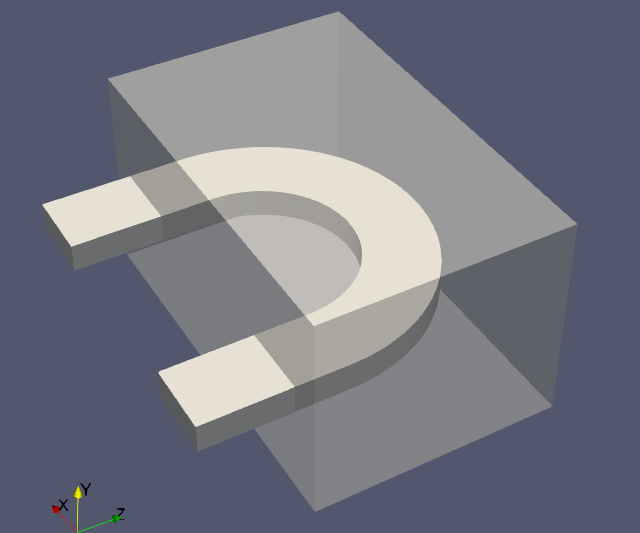
The current density can be set either as
for current density distribution on the terminal orElectric Current Density = Real 100.0
as the total current through the face.Electric Current Density = -distribute 100.0
At low frequencies, the solver converges well.
WhitneyAVHarmonicSolver: Solving harmonic AV equations with edge elements
50 0.1359E+00
100 0.3095E+00
150 0.1037E+01
200 0.2617E+00
250 0.7828E-03
300 0.4052E-05
350 0.3422E-08
At high frequencies the solver stuck at the residual about 0.15E-06
WhitneyAVHarmonicSolver: Solving harmonic AV equations with edge elements
50 0.1633E+03
100 0.1926E+02
150 0.7856E+01
200 0.3782E+00
250 0.1516E+00
300 0.9654E+01
350 0.3289E+00
400 0.4955E-01
450 0.1908E-02
500 0.5251E-04
550 0.5538E-06
600 0.1520E-06
..... continues until max iterations are reached.

The result seems to be converged, but the residual is stuck at a fixed value. I suspect that the current distribution does not fit the numerical solution. Ideas on how to treat this case?